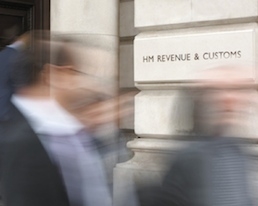The gap between the amount of tax due and the amount collected fell in 2014-15 to its lowest-ever level of 6.5%, official statistics published today reveal.
This figure is one of the lowest in the world, HMRC said today, as it announced it had been reducing the tax gap from 8.3% in 2005-06.
HMRC stated: “If the tax gap had remained at the 2005-06 level of 8.3%, it would have grown to £47 billion and the country would have been £11 billion a year poorer.
“This year’s tax gap figures highlight the positive impact that HMRC’s digital transformation is having in making it easier for people to pay the right amount of tax”.
In 2014-15, HMRC collected record revenues of almost £518 billion – almost £12 billion more than in the previous year and also secured almost £27 billion in record compliance yield.
Jane Ellison, The Financial Secretary to the Treasury, said: “This government is committed to tackling tax evasion and avoidance wherever it occurs.
“The UK has one of the lowest tax gaps in the world. By investing £1.8 billion since 2010 in boosting HMRC compliance capabilities, we’ve brought our tax gap down to its lowest ever level. And to make it even easier for people to pay the right tax in the future, we’ve invested £1.3 billion in new digital tools.”
Jon Thompson, HMRC’s Chief Executive, said: “These figures show we have successfully maintained a downward pressure on the tax gap in 2014-15, while collecting record revenues of £518 billion.
“The UK is an honest and compliant country when it comes to tax, as the vast majority of people and businesses pay what they owe, when they owe it. We should be proud that we meet our obligation as a nation in willingly paying for our public services, which is why we have one of the lowest tax gaps anywhere in the world.
“But if we are to ensure a fairer and more effective tax system, and more money for public services, we must keep up the pressure on the tax gap by relentlessly pursuing the small minority who seek to cheat their taxes through evasion, aggressive avoidance and organised crime.”
HMRC’s tax gap estimate methodology is scrutinised by the International Monetary Fund and the National Audit Office. No other country publishes such a level of detail on an annual basis, HMRC claimed.

